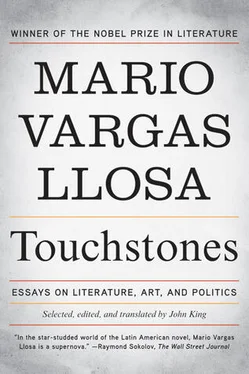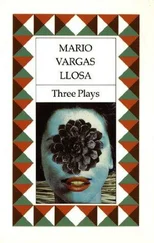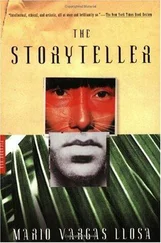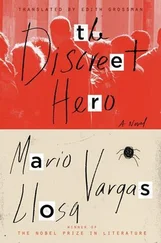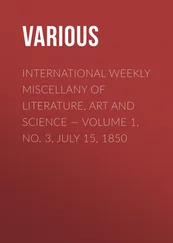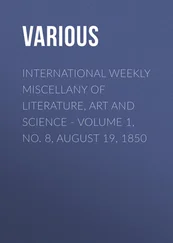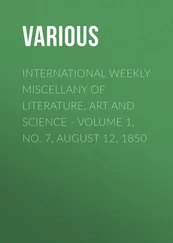The adventure where Don Quixote takes his libertarian principles to almost suicidal lengths — demonstrating that his idea of freedom anticipates by some two centuries certain aspects of anarchist thinking — is one of the most famous in the novel. It is when he frees twelve criminals, including the sinister Ginés de Pasamonte, the future Master Pedro, despite the fact that the Ingenious Hidalgo is perfectly aware, from their own words, that they are all criminals, condemned to the king’s galleys (I, 22). The reasons he gives for his open defiance of authority — that it is not right that honourable men should be the executioners of other men — scarcely masks, in its vagueness, the real motivation for his behaviour which, in this regard, is utterly coherent throughout the novel. This motivation is his overwhelming love of freedom which, if he has to choose, he even places above the law, and his profound scepticism towards authority that, for him, offers no guarantee of what he calls, rather ambiguously, ‘distributive justice’, an expression that seems to imply a desire for equality, that sometimes counterbalances his libertarian ideals.
In this episode, as if to dispel even the slightest doubt as to how unbridled and free his thinking really is, he praises the office of the pimp: it is seen as an office for intelligent people, one that is very necessary in a well-ordered society. He is angry to hear that an old man has been sent to the galleys for this because, in his opinion, a pimp should have been sent there, not to row but to lead and to command. Anyone daring to rebel in such an open fashion against the political and moral correctness of the time was a unique kind of madman who, and not just when he spoke about romances of chivalry, said and did things that questioned the very roots of the society that he lived in.
The Homelands of Don Quixote
What image of Spain emerges from the pages of Cervantes’s novel? That of a vast and diverse world, without geographical borders, made up of an archipelago of communities, villages and towns, which the characters call their ‘homelands’. This is very similar to the way in which empires and kingdoms are described in romances of chivalry, even though Cervantes was supposedly ridiculing the genre in Don Quixote . (Instead, he paid them a magnificent homage, and one of his great literary achievements was to bring them up to date, preserving, through playfulness and humour, everything that could survive from the chivalric romances, and incorporating all of this into the social and artistic values of the seventeenth century, a very different period to the time when the romances had first appeared.)
On his three sallies, Don Quixote travels round La Mancha and parts of Aragon and Catalonia, but, since there are so many diverse characters and references to places and things throughout the novel, Spain appears to be much larger, united in its geographical and cultural diversity, with vague borders that seem to be defined not in terms of territories and administrative districts, but rather in terms of religious boundaries. Spain ends in those vague, specifically marine, boundaries where the dominions of the Moors, the religious enemies, begin. But while Spain provides the context, the varied and inescapable limits that encompass the relatively small area that Don Quixote and Sancho Panza move around in, what is described, with great vividness and warmth, is the ‘homeland’, that concrete, human space, bounded by memory, a landscape, certain people, certain habits and customs that men and women retain in their memory as their patrimony, as the thing that best defines them. The characters of the novel travel the world, we might say, with their towns and villages on their backs. They turn up with these credentials, their ‘homelands’, and everyone can remember, with irrepressible nostalgia, these small communities where they have left loved ones, friends, family, houses and animals. When at the end of the third journey, after so many adventures, Sancho Panza catches sight of his village, he falls to his knees, visibly moved, and exclaims, ‘open your eyes, my longed-for village, and see your son Sancho Panza returning’ (II, 72).
Because, with the passage of time, this idea of the homeland would gradually disintegrate and begin to meld instead with the concept of the nation (which does not appear until the nineteenth century), we should point out that the ‘homelands’ in Don Quixote have nothing to do with, indeed they sit uncomfortably with, this abstract, general, schematic and essentially political concept of the nation. This nation is at the root of all nationalisms, a collectivist ideology that purports to define individuals through their belonging to a human conglomerate marked out as different to others by certain characteristics such as race, language and religion. This concept is poles apart from the impassioned individualism shown by Don Quixote and those who accompany him in Cervantes’s novel, a world in which ‘patriotism’ is a generous and positive feeling, of love of the land and one’s own people, an adherence to memory and the family past, and not a way of setting oneself apart, becoming exclusive and erecting barriers against ‘others’. Don Quixote’s Spain does not have borders, and it is a diverse, multicoloured world, made up of innumerable homelands, which opens up to the outside world and merges with it, and opens its doors to people who come from other parts, so long as they come in peace and can overcome the hurdle (which was insurmountable in the Counter-Reformation mentality of the period) of religion (that is, by converting to Christianity).
A Modern Book
Don Quixote ’s modernity can be found in the rebellious quest for justice that leads the main character to take on, as his personal responsibility, the task of changing the world for the better even when, as he attempts to put this into practice, he makes mistakes, comes up against insuperable obstacles and is beaten, ill-treated and turned into an object of derision. But it is also a contemporary novel because, in his account of Don Quixote’s exploits, Cervantes revolutionised the narrative forms of his time and laid the foundations for the modern novel. Even if they do not know it, contemporary novelists who play with form, distort time, mix up different points of view and experiment with language, are all indebted to Cervantes.
The revolution in form that is Don Quixote has been studied and analysed from every possible standpoint, and yet, as happens with these exemplary masterpieces, it is an inexhaustible source because, like Hamlet or The Divine Comedy or the Iliad and Odyssey , it evolves with the passage of time and recreates itself in accordance with the aesthetic values of each different culture, becoming in this way a real Ali Baba’s cave, whose treasures are never-ending.
Perhaps the most innovative aspect of the narrative form of Don Quixote is the way in which Cervantes dealt with the problem of the narrator, the basic problem that any novelist must first resolve: who is going to tell the story? The answer that Cervantes gave to this question brought a subtlety and complexity to the genre which modern novelists still benefit from, and which was the equivalent in its day to the impact in our times of Joyce’s Ulysses , Proust’s Remembrance of Things Past , or, in the Latin American field, of García Márquez’s One Hundred Years of Solitude or Cortázar’s Hopscotch .
Who is telling the story of Don Quixote and Sancho Panza? Two narrators: the mysterious Cide Hamete Benengeli, whom we never read directly because his original manuscript is in Arabic, and an anonymous narrator, who sometimes speaks in the first person but most frequently in the third person of omniscient narrators, who, supposedly, translates Cide Hamete Benengeli’s manuscript into Spanish and, at the same time, adapts, edits and comments on it. This is a Chinese box structure; the story that we are reading is contained in another, earlier and much larger structure that we can only guess at. The existence of these two narrators introduces into the story an ambiguity and a sense of uncertainty about this ‘other story’, Cide Hamete Benengeli’s account, which lends a subtle relativism to the adventures of Don Quixote and Sancho Panza, a subjective aura that is a key component of the autonomy, sovereignty and originality of the work.
Читать дальше
